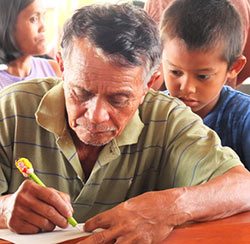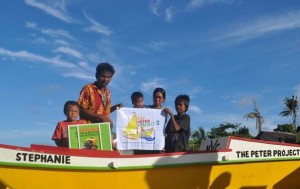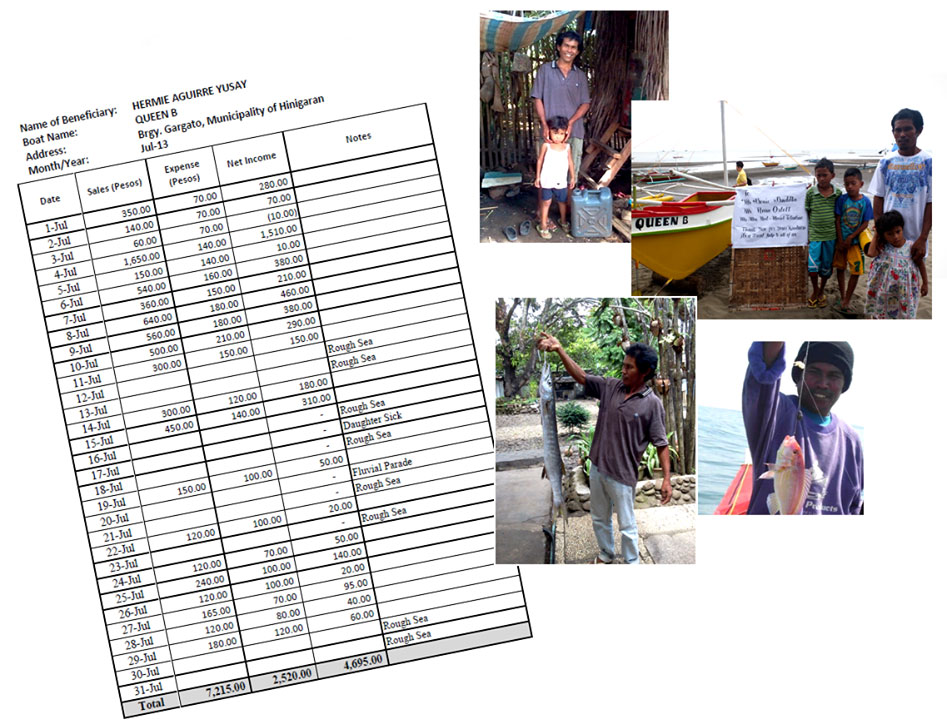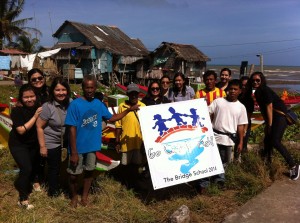Beneficiaries
The Peter Project now targets fishermen whose boats and sources of income were destroyed by supertyphoon Haiyan, which devastated many parts of the Visayas in November 2013. It is estimated that more than 10,000 fishermen lost their sources of livelihood during this disaster. Before Haiyan, the project targeted fishermen’s helpers, who already had the skills to earn a higher income if they had their own fishing vessels.
Goal
The Peter Project aims to allow beneficiary fishermen reclaim their source of income as soon as possible, reducing the negative impact of the disaster on their lives and that of their families and communities. By allowing beneficiaries to earn their own living and feed their families, NVC hopes to restore their dignity and allow them to view the future with hope.
Project Approach
Beneficiary screening: NVC carefully selects and screens target beneficiaries in coordination with government agencies or other NGOs. NVC field officers and/or volunteers conduct personal home visitations. Project sites are carefully screened and beneficiaries monitored to ensure sustainability and responsible fishing.

Peter Project beneficiaries understand that they enter into a long-term contract with responsibilities to fulfill when they sign the agreement with NVC.
Conditions of boat transfer: When a person qualifies as a beneficiary, he signs an agreement with NVC Foundation stating the following:
- He agrees to provide “sweat equity” in the manufacture of the boat, which means that he has to contribute some of his time towards the making of the boat. In most cases, the fisherman builds the outriggers himself.
- He understands that the boat is endorsed solely to him for operation and livelihood. Thus, he cannot rent it out or sell it. If he is incapacitated or passes away, NVC reserves the right to withdraw the boat and turn it over to someone who may have a greater economic need than the beneficiary’s family, or the skills necessary to use the boat. NVC stresses stewardship over ownership.
- The costs of boat repair are on his account.

Peter Project beneficiary Aladino Mahusay and family of Brgy. Lantangan, Carles, Iloilo with their new motorized boat, “Stephanie”
What Beneficiaries Receive
- a motorized boat with outriggers specifically designed for the waters it sails on, allowing fishermen to safely cover a bigger area and bring home a larger catch while exerting less effort. NVC has opted for fiberglass boats because the sudden rush to build replacement bancas is rapidly depleting Philippine forest resources. Fiberglass bancas not only avoid deforestation but also last longer than the wooden option. More information on NVC’s fiberglass boats
- training on environment conservation and responsibilities towards the environment
- daily Mingo Meals for six months for the children of the beneficiary household to ensure holistic support for the beneficiary
- continuous support and an ongoing relationship with NVC (for example, NVC has recently launched The Stella Maris Project to further assist Peter Project beneficiary communities)
Accountability and Monitoring
Project monitors are assigned to beneficiary communities or clusters of beneficiaries. The fishermen prepare and submit daily catch report to the project monitors detailing daily catch, revenue, and expenses. The project monitor collates the daily catch reports and compares them against each other, checking to see if some beneficiaries are off-trend. This is usually a sign of misreporting and alerts the project monitor to investigate further. If there are days when there is no catch, fishermen must also provide a valid reason, such as sickness or bad weather. Upon request, NVC can provide donors with a summary of their beneficiary’s catch report.

Hermie Aguirre was a fisherman’s helper earning P50 a day before he received QUEEN B under The Peter Project. Here is his monthly catch report. Click on the image to view a larger version.

Thank you, Bridge School teachers, for coming all the way from Manila to Cadiz, Negros Occidental to turn over the four boats donated by your students, parents and teachers.
Donating a Boat
Individuals, groups, or entities may sponsor one or more waiting Peter Project beneficiaries. Your donation provides one beneficiary with a fiberglass or wooden boat as well as all of the other components of the project, listed above.
- Fiberglass boat: Php 25,000 or US$570
- Wooden boat: Php 20,000 or US$456
Donors are provided via email a photo of the boat and its recipient, with his name, location, and other details.


